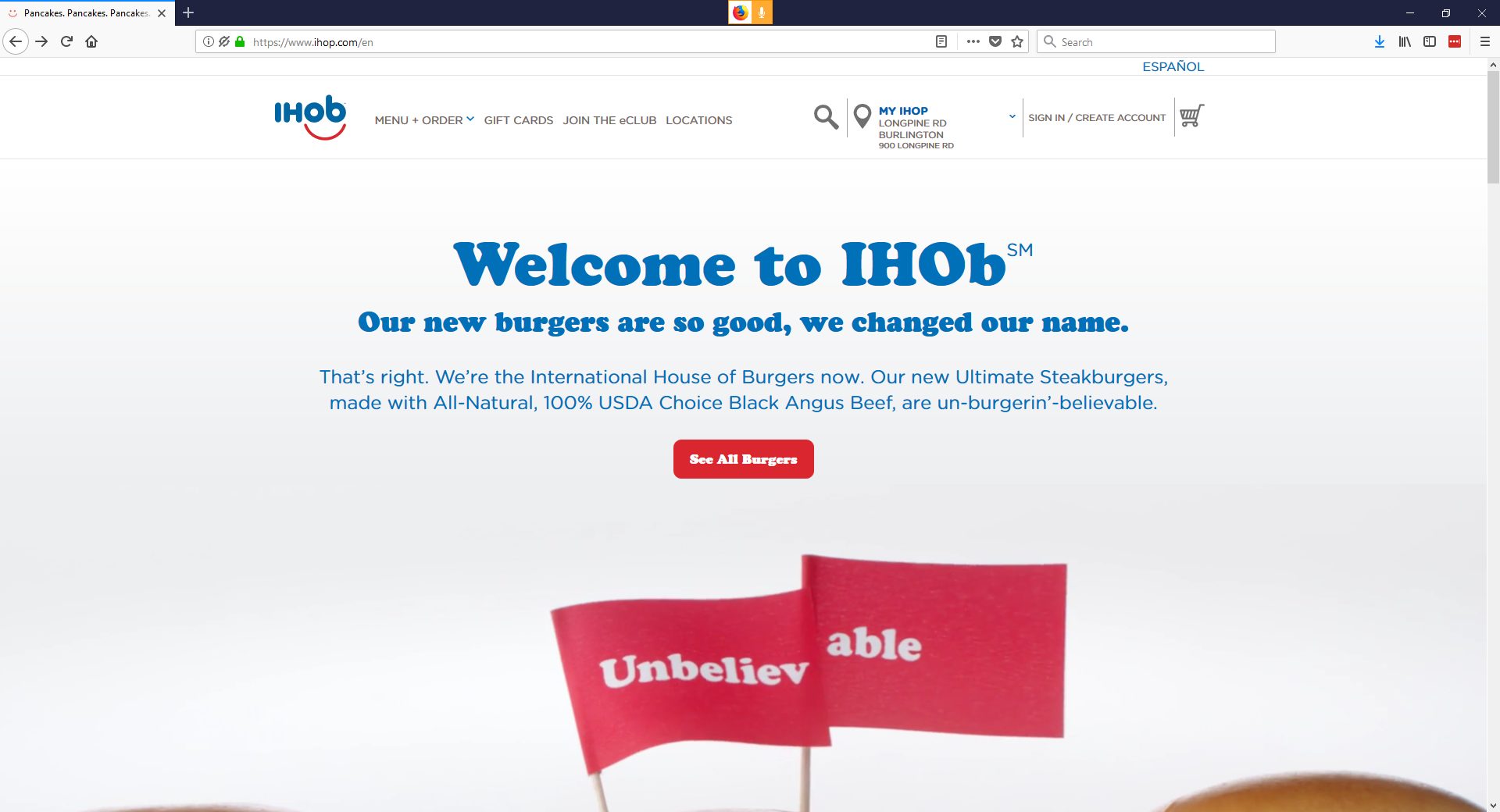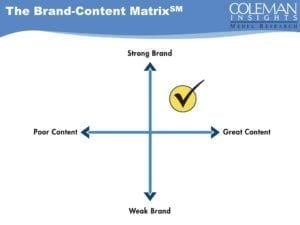
International House of Burgers. Not Breakfast. Not even Brunch. Burgers.
If you were able to tear yourself away from Singapore this past week and pay attention to something with slightly lower stakes, you’ve seen and/or heard about IHOP’s total branding switch to IHOb. No longer the place we think of when it’s 2am and we want some pancakes. Now IHOP wants us to think of them for… burgers.

National—nay, global—reaction has been pretty harsh, though bewildered might be a better word for it. Wendy’s used its stealthily snarky Twitter account to raise its proverbial eyebrows. Those of us who work with brands and branding for a living raised our actual eyebrows.
Back in March, our president, Warren Kurtzman, wrote in this blog about how restaurants can make changes while still staying true to their brand identities. It is similar to the way we encourage radio stations to keep their base music positions in mind when they want to make changes. When developing images, we believe a brand’s base position is most important, as indicated in our Image PyramidSM below.

Making changes to your brand is nuanced and not without its challenges, but it can certainly be done. And I can kind of understand why IHOP was feeling a bit old and tired and wanted to make a change. Pancakes aren’t exactly hip these days.
This change, however, boggles many minds. There are a couple of reasons why this has raised so many questions, both to the branding community and the general public:
First: It’s too abrupt. Start with more… burger promotion, if you will. IHOP has served burgers for years (don’t they have a pretty good tuna melt, too?), so promoting those instead of the Rooty Tooty Fresh ‘n’ Fruity might have made a welcome change. It would have allowed customers to remember that oh yeah, IHOP isn’t ONLY for pancakes. But they can still get their short stacks if they want them.
Second: The rollout isn’t complete. In the screenshot of the website on this page, the URL still reads “ihop”, and that tab on the top? “Pancakes, Pancakes, Pancakes.” Now, the company has since said this is simply a temporary stunt and wasn’t intended to stick. But then, why change the company’s Twitter handle? Why plan to use the name in promotions all summer? It’s just clunky. Either go all in with a re-brand, or run a well-thought-out promotion focusing on the burgers you already serve.
Third: It simply doesn’t make sense and it’s not true to the essence of the brand.
Let me elaborate on that one. In a few past lives, I’ve done a lot of work studying Millennials and how they operate. The one word that always comes up is “authenticity.” Millennials are very sharp and aware when someone or something isn’t authentic. This does not mean that a brand can never adjust or change, nor does it mean that Millennials expect products and brands to always “behave” the same way. What they’re looking for—what even we older-than-Millennials are looking for—is a brand that remains true to itself and doesn’t try too hard to appeal to some suddenly desirable yet different demographic. If Old Navy changed its name to Young Navy and stopped selling cheap jeans, that would be inauthentic. If Whole Foods started selling Heinz ketchup, that would be inauthentic, but if it started carrying a line of Heinz Organic Limited Edition ketchup, that would be more true to the Whole Foods brand. And customers are smart. They know when a brand is trying to be “too cool for school.” They especially know when a brand is turning its back on its base.
IHOP (oy, “IHOb”) is trying to be too cool for school. What is so wrong with pancakes? That’s what you’ve been known for since… well, forever. And even if pancakes aren’t chic or fashionable, being the International House of Pancakes makes you different from Applebee’s or Chili’s or Bob’s Big Boy.
Go ahead and promote your burgers. But please, don’t do it at the expense of your awesome, strong, iconic brand. As we like to say here at Coleman Insights, your base position is the core of your brand, and you should always be true to it.


